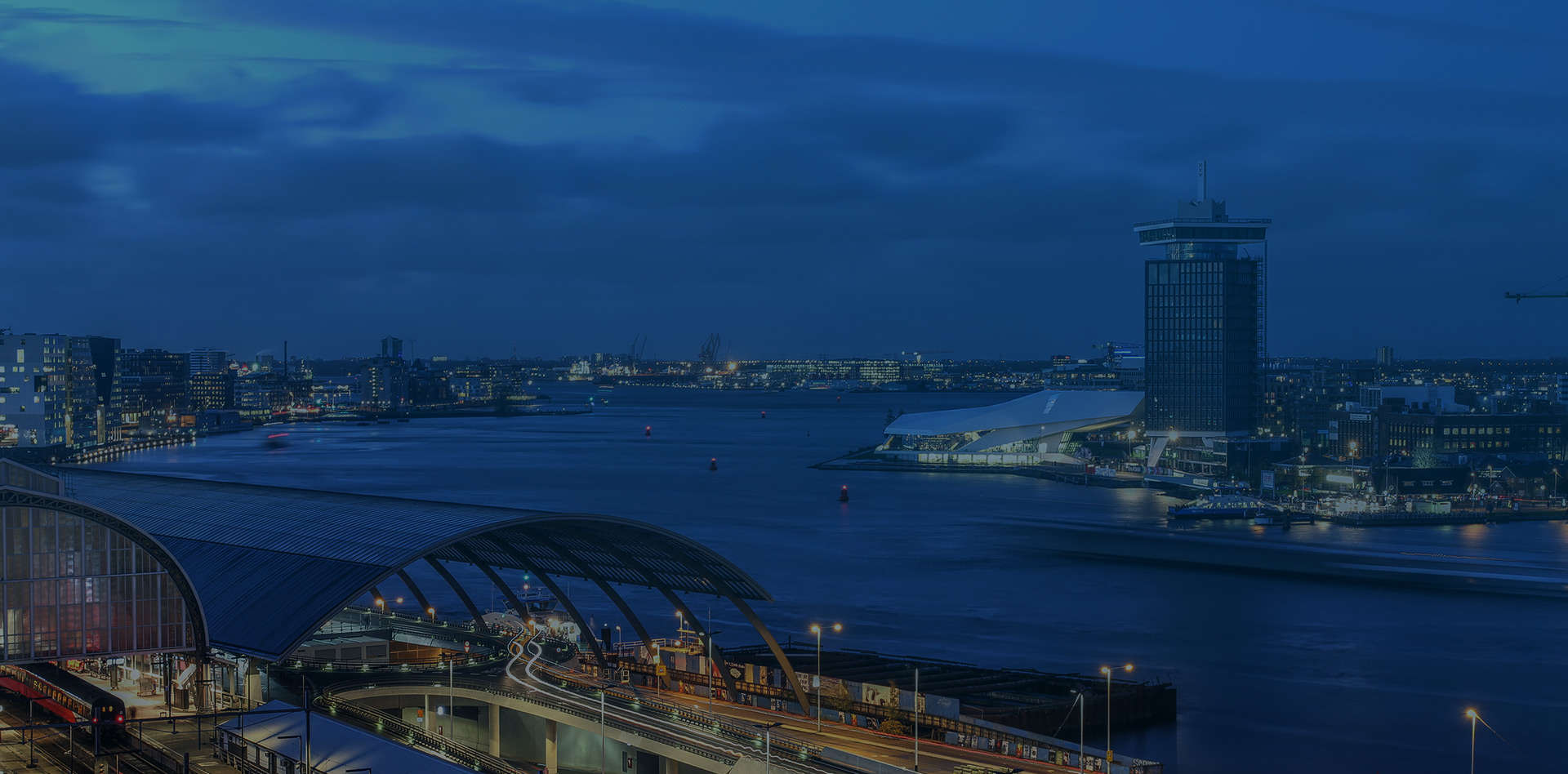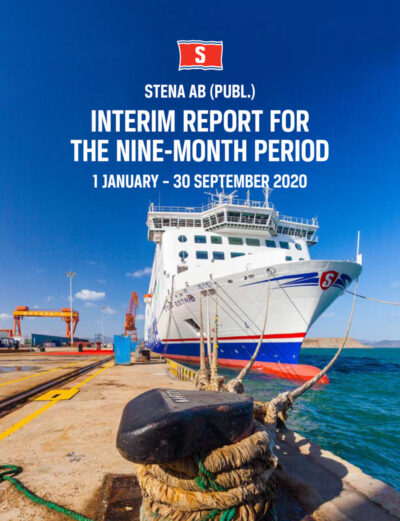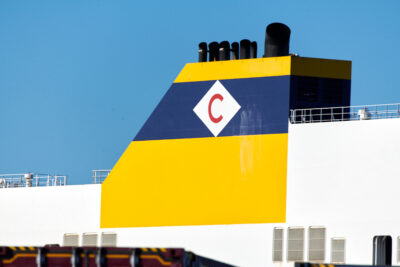Stena Group Reports First Nine Months
- Total revenues decreased by SEK 2,178 million to SEK 24,572 (26,750) million in the nine months ended 30 September 2020. The decreased revenues mainly relate to the lower sales within Ferry- and Drilling operations.
- Total direct operating expenses decreased by SEK 224 million to SEK 17,360 (17,584) million in the nine months that ended on 30 September 2020. The decreased operating expenses are mainly related to lower operating expenses within Ferry Operations due to reduced businesses, together with redundancy costs within Ferry Operations amounting to SEK 302 million.
- The EBITDA for the consolidated Stena AB Group decreased by SEK 2,261 million to SEK 4,837 (7,098) million in the nine-month period that ended on 30 September 2020 mainly due to the Covid-19 outbreak and less operating days within the Drilling segment, offset by improved EBITDA within the Tanker- and LNG operations and New Businesses segment.
- Ferry Segment EBITDA, excluding redundancy costs, decreased by SEK 1,544 million to SEK 1,414 (2,958) million in the nine months due to plunge in passenger volumes and decreasing freight volumes as a consequence of the Covid-19 outbreak. Redundancy costs for closing routes amounting to SEK 302 million. Car volumes decreased 53%, passenger volumes decreased 56% and freight volumes decreased 8%.
- EBITDA from chartering out RoRo vessels decreased by SEK 85 million to SEK 190 (275) million in the nine-month period. The decrease is mainly due to lower charter income due to the sale of the vessel KAIARAHI in Q4, 2019 offset by the delivery of GALICIA in the Q3, 2020.
- In order to streamline the reporting and use the same valuation basis for major classes of assets, Stena has decided to change the measurement policy for vessels from the cost model to the revaluation model. The change is recorded as a one-time effect in revaluation reserves within equity as of January 1, 2020. The remeasurement has increased the value of vessels with SEK 4.3 billion as of January 1, 2020 before tax.
Ferry Operations (SEK in millions)
Q3, 2020
- Revenue 2,934 (4,547)
- Direct Operating Expenses -1,780 (-2,634)
Nine months, 2020
- Revenue 7,878 (11,128)
- Direct Operating Expenses -5,680 (-7,192)
- Redundancy Costs -302
Download the report by clicking on the cover picture
DFDS Opens New Direct RoPax Route Between Dunkerque and Rosslare
From 2 January 2021, a new freight ferry route between Rosslare and Dunkirk will offer trucks and their drivers direct and paperless transport between EU countries.
- The port of Dunkerque is a gateway to Ireland’s top export markets – France, Belgium, Germany and Netherlands – and a host of secondary markets
- 3 chartered RoPax ferries (possibly Visentini-class vessels)
- 6 weekly departures in each direction
- Each ferry has a capacity of up to 125 trucks and their drivers in Covid-19 safe single cabins
- Crossing time is 24 hours
- The route will initially not target passengers, although a passenger offering may be marketed at a later stage
- The route is expected to reach revenues above DKK 300m in 2022
- The route is jointly owned by DFDS and Irish interests
- Managing director will be Aidan Coffey
- DFDS offices will be opened in both Rosslare and Cork
CLdN to Start Second Weekly Call between Zeebrugge and Cork
After having successfully started a brand-new service between Zeebrugge (BE) and Cork (IE) in May this year, CLdN is poised to introduce a second weekly call in the coming days, to cope with the increasing demand on this route.
In light of the end of the transition period of Brexit approaching, combined with the modal shift from accompanied to unaccompanied shipping and having a direct link between the continent and Ireland bypassing the Landbridge, resulted in a booming demand for the Cork service.
DFDS: Partnership Aims To Develop Hydrogen Ferry
DFDS and its partners (*) have applied for EU support for development of a ferry powered by electricity from a hydrogen fuel cell system which only emits water. Green hydrogen is to be produced by a projected offshore wind energy-powered electrolyser plant in Greater Copenhagen.
EUROPA SEAWAYS (project name)
- On board power production: PEM Fuel cells
- Engine power: 23MW
- Fuel: Compressed hydrogen
- Fuel tank capacity: 44T
- Passenger capacity: 1,800
- Trailer and car capacity: 2,300 lane metres
- Route: initially Oslo-Frederikshavn-Copenhagen
- Bunkering interval: 48 hours
- CO2e/year emission avoidance: 64,000 Tons
Design: Knud E. Hansen (with link to their website’s dedicated page)
(*) DFDS, ABB, Ballard Power Systems Europe, Hexagon Purus, Lloyd’s Register, Knud E. Hansen, Ørsted and Danish Ship Finance.
FERRY PORTS
Ystad’s New Port Will Soon be Ready for Use
The Port of Ystad in the south of Sweden has been expanded with new ferry berths to be able to receive more traffic and larger ships. On Wednesday, November 25, the first tests were conducted in the new port to secure that the new ferry berths work as planned. From the turn of the year, the new ferry berths will be used regularly.
“We are very happy to finalize this comprehensive project. The Port of Ystad now has good conditions to continue to grow on both the passenger and freight side. We look forward to welcoming current and future shipping companies in our new port”, says Björn Boström, CEO of Port of Ystad.
GNV to Start Civitavecchia – Olbia next Summer
GNV is the opening to sales of the new summer connection for Sardinia between Civitavecchia and Olbia, with 5 departures a week from each port starting from June 2021.
The Civitavecchia-Olbia route meets the demand of customers who are asking for more and more connections to and from Sardinia , which GNV connects with the historic Genoa-Porto Torres and Genoa-Olbia lines.
Brittany Ferries Celebrates the Introduction of GALICIA
Today (Friday 27 November), GALICIA was officially inaugurated through a life online event. More in next Ferry Shipping News.













